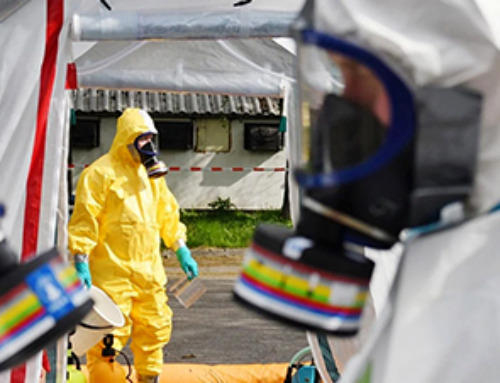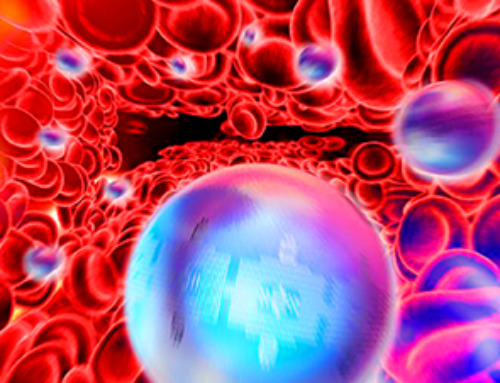In a recent study published in the journal Science Advances, researchers investigated the impact of microplastics on blood flow and neurobehavioral functions in mice. Using advanced imaging techniques, they observed that microplastics obstruct cerebral blood vessels by causing individual immune cells to become trapped in capillaries. The findings revealed a novel mechanism through which microplastics indirectly disrupt vascular and neurological functions without crossing the blood-brain barrier.
Microplastics and human health
Microplastics originate from plastic degradation and are being recognized as environmental pollutants with potential health risks to humans and ecosystems. These particles can enter the human body through ingestion, inhalation, or medical devices. Research shows that microplastics can cross biological barriers, such as the blood-brain barrier, and interact with various physiological systems, including the immune and cardiovascular systems.
While nanoscale plastics have been linked to neurological disorders (e.g., exacerbating α-synuclein pathology associated with Parkinson’s disease) and inflammation, the impact of micron-sized microplastics remains unclear. Previous studies have demonstrated that microplastics can induce immune responses, alter cellular functions, and affect blood perfusion, potentially leading to organ dysfunction. However, the specific mechanisms of microplastic-induced vascular or neurological disruptions, particularly in vivo, are poorly understood.
About the study
The present study employed various in vivo and ex vivo methods to investigate how microplastics affect blood flow and neurobehavioral functions in mice. Eight-week-old male mice were housed under controlled conditions and used as the study model. The researchers intravenously injected fluorescently labeled polystyrene microplastics of three sizes — 5 µm (micron-sized), 2 µm, and 80 nm (nanoscale) — into mice at concentrations designed to mimic human exposure levels.
The study used advanced imaging techniques, including laser speckle contrast imaging and miniature two-photon microscopy, to visualize the microplastics within cerebral blood vessels. These methods provided high-resolution, real-time tracking of microplastic movements and vascular interactions.
Blood samples were also collected for flow cytometry analysis to identify the immune cells responsible for microplastic uptake and obstruction. Specifically, the cells labeled with fluorescent microplastics were sorted and characterized to understand the role of immune cells, such as neutrophils and macrophages, in the phagocytosis of microplastics. Phagocytosis altered immune cell morphology, increasing their size (forward scatter) and reducing granularity (side scatter), which contributed to vascular blockages.
Additionally, behavioral experiments, including open-field, Y-maze, rotarod, and rod-hanging tests, were conducted to evaluate the neurobehavioral effects of microplastics in mice. These tests assessed exploratory behavior, memory, motor coordination, and endurance after microplastic exposure.
Laser speckle imaging was also performed to measure cerebral blood perfusion at various time points post-injection to determine how microplastics affected vascular flow. The combination of imaging, behavioral, and cellular analyses provided a comprehensive understanding of how microplastics interact with the vascular and neurological systems.
Key findings
The study found that microplastics disrupt vascular and neurobehavioral functions by causing immune cells that ingested them to become mechanically trapped in narrow cerebral vessels. The researchers observed individual immune cells (termed MPL-Cells) laden with microplastics obstructing blood flow, particularly in capillaries.
These obstructions reduced cerebral blood perfusion within 30 minutes, with the most significant effects in smaller vessels. Unlike classical blood clots, these blockages stemmed from physical cell entrapment rather than platelet activation or clotting cascades.
The behavioral experiments demonstrated that mice exposed to microplastics exhibited decreased locomotion, impaired memory, and reduced motor coordination. Open-field and Y-maze tests showed significant reductions in movement speed and spatial memory, while rotarod and rod-hanging tests indicated decreased motor skills and endurance. Although neurobehavioral impairments resolved within four weeks, some vascular obstructions persisted at lower densities.
Further analysis indicated that larger microplastics (5 µm) caused prolonged obstructions, while smaller particles (2 µm and 80 nm) were cleared faster. The results from flow cytometry revealed that phagocytosis of microplastics altered immune cells’ morphology and adhesive properties, contributing to vascular blockages. These findings suggested that microplastics’ size, concentration, and interactions with immune cells are critical factors in their impact on vascular and neurological health.
The study emphasized the potential health risks of microplastics, particularly their ability to obstruct blood vessels and disrupt brain function. However, the authors cautioned that translating these findings to humans requires further research due to differences in vascular size and physiology between mice and humans.
Conclusions
To summarize, the findings revealed the mechanisms through which microplastics obstruct blood flow and impair neurobehavioral functions via immune cell entrapment in cerebral vessels. Factors such as particle size were also found to influence these effects, with smaller microplastics causing less obstruction.
While the neurobehavioral impairments due to microplastics in mice were largely reversible, residual vascular obstructions persisted even after behavioral recovery. The findings emphasized the need for further research on the long-term health risks posed by microplastics, particularly in individuals with pre-existing cardiovascular conditions or narrowed blood vessels.
- Huang, H., Hou, J., Li, M., Wei, F., Liao, Y., & Xi, B. (2025). Microplastics in the bloodstream can induce cerebral thrombosis by causing cell obstruction and lead to neurobehavioral abnormalities. Science Advances, 11(4), eadr8243. DOI: 10.1126/sciadv.adr8243, https://www.science.org/doi/10.1126/sciadv.adr8243
News
Fever-Proof Bird Flu Variant Could Fuel the Next Pandemic
Bird flu viruses present a significant risk to humans because they can continue replicating at temperatures higher than a typical fever. Fever is one of the body’s main tools for slowing or stopping viral [...]
What could the future of nanoscience look like?
Society has a lot to thank for nanoscience. From improved health monitoring to reducing the size of electronics, scientists’ ability to delve deeper and better understand chemistry at the nanoscale has opened up numerous [...]
Scientists Melt Cancer’s Hidden “Power Hubs” and Stop Tumor Growth
Researchers discovered that in a rare kidney cancer, RNA builds droplet-like hubs that act as growth control centers inside tumor cells. By engineering a molecular switch to dissolve these hubs, they were able to halt cancer [...]
Platelet-inspired nanoparticles could improve treatment of inflammatory diseases
Scientists have developed platelet-inspired nanoparticles that deliver anti-inflammatory drugs directly to brain-computer interface implants, doubling their effectiveness. Scientists have found a way to improve the performance of brain-computer interface (BCI) electrodes by delivering anti-inflammatory drugs directly [...]
After 150 years, a new chapter in cancer therapy is finally beginning
For decades, researchers have been looking for ways to destroy cancer cells in a targeted manner without further weakening the body. But for many patients whose immune system is severely impaired by chemotherapy or radiation, [...]
Older chemical libraries show promise for fighting resistant strains of COVID-19 virus
SARS‑CoV‑2, the virus that causes COVID-19, continues to mutate, with some newer strains becoming less responsive to current antiviral treatments like Paxlovid. Now, University of California San Diego scientists and an international team of [...]
Lower doses of immunotherapy for skin cancer give better results, study suggests
According to a new study, lower doses of approved immunotherapy for malignant melanoma can give better results against tumors, while reducing side effects. This is reported by researchers at Karolinska Institutet in the Journal of the National [...]
Researchers highlight five pathways through which microplastics can harm the brain
Microplastics could be fueling neurodegenerative diseases like Alzheimer's and Parkinson's, with a new study highlighting five ways microplastics can trigger inflammation and damage in the brain. More than 57 million people live with dementia, [...]
Tiny Metal Nanodots Obliterate Cancer Cells While Largely Sparing Healthy Tissue
Scientists have developed tiny metal-oxide particles that push cancer cells past their stress limits while sparing healthy tissue. An international team led by RMIT University has developed tiny particles called nanodots, crafted from a metallic compound, [...]
Gold Nanoclusters Could Supercharge Quantum Computers
Researchers found that gold “super atoms” can behave like the atoms in top-tier quantum systems—only far easier to scale. These tiny clusters can be customized at the molecular level, offering a powerful, tunable foundation [...]
A single shot of HPV vaccine may be enough to fight cervical cancer, study finds
WASHINGTON -- A single HPV vaccination appears just as effective as two doses at preventing the viral infection that causes cervical cancer, researchers reported Wednesday. HPV, or human papillomavirus, is very common and spread [...]
New technique overcomes technological barrier in 3D brain imaging
Scientists at the Swiss Light Source SLS have succeeded in mapping a piece of brain tissue in 3D at unprecedented resolution using X-rays, non-destructively. The breakthrough overcomes a long-standing technological barrier that had limited [...]
Scientists Uncover Hidden Blood Pattern in Long COVID
Researchers found persistent microclot and NET structures in Long COVID blood that may explain long-lasting symptoms. Researchers examining Long COVID have identified a structural connection between circulating microclots and neutrophil extracellular traps (NETs). The [...]
This Cellular Trick Helps Cancer Spread, but Could Also Stop It
Groups of normal cbiells can sense far into their surroundings, helping explain cancer cell migration. Understanding this ability could lead to new ways to limit tumor spread. The tale of the princess and the [...]
New mRNA therapy targets drug-resistant pneumonia
Bacteria that multiply on surfaces are a major headache in health care when they gain a foothold on, for example, implants or in catheters. Researchers at Chalmers University of Technology in Sweden have found [...]
Current Heart Health Guidelines Are Failing To Catch a Deadly Genetic Killer
New research reveals that standard screening misses most people with a common inherited cholesterol disorder. A Mayo Clinic study reports that current genetic screening guidelines overlook most people who have familial hypercholesterolemia, an inherited disorder that [...]





















